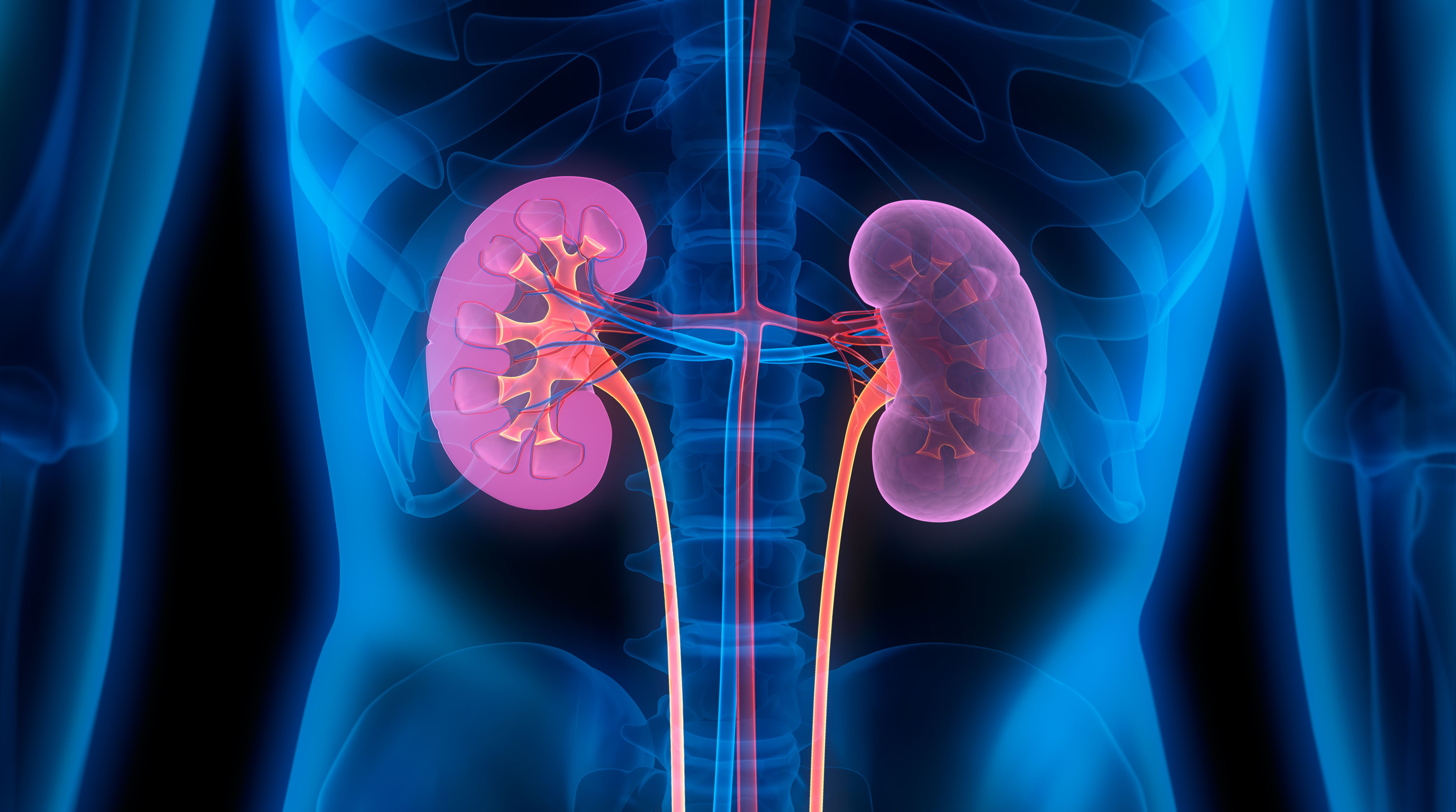Everolimus Post-Surgery Does Not Improve Recurrence-Free Survival in RCC
Results from the EVEREST study do not support the adjuvant use of everolimus for patients with renal cell carcinoma following surgery.
Renal cell carcinoma: © peterschreiber.media - stock.adobe.com

There was no benefit in recurrence-free survival observed with postoperative everolimus vs placebo among patients with renal cell carcinoma (RCC) who are at a high risk of recurrence following nephrectomy, according to findings from the phase 3 EVEREST trial (NCT01120249).1
With a median follow-up of 76 months (interquartile range, 61-92), patients treated with everolimus (n = 775) had a longer recurrence-free survival rate with everolimus compared with those given placebo (n = 770), and, at 5 years, recurrence-free survival rates were 67% (95% CI, 63-70) vs 63% (95% CI, 60-67; stratified log-rank P =.050; stratified HR, .85; 95% CI, 0.72-1.00; P =.051). The prespecified P value for statistical significance of 0.044 was not met.
While there was a longer recurrence-free survival rate observed with everolimus compared with placebo among patients in the very-high-risk group, (HR, 0.79; 95% CI, 0.65-0.97; P =.022) this result was not seen in the intermediate-high-risk group (HR, 0.99; 0.73-1.35; P =.96).
A total of 1545 adult patients with histologically confirmed RCC were enrolled in the trial and randomly assigned in a 1:1 fashion to receive everolimus or placebo between April 1, 2011, and September 15, 2016. There were 755 patients assigned to everolimus and 744 assigned to placebo eligible for inclusion in the efficacy analysis and patients were treated with 10 mg oral everolimus daily or placebo for 54 weeks.
The randomized, double-blind, phase 3 trial included patients with RCC who had undergone a full surgical resection, were at intermediate-high or very high risk of recurrence, and had no evidence of residual or metastatic RCC on CT scan of the chest, abdomen, and pelvis, which was performed after nephrectomy and within 28 days before registration.2
Among those enrolled, patient characteristics were well balanced across treatment arms. A total of 412 (55%) of 755 patients in the everolimus arm and 407 (55%) of 744 patients in the placebo arm were in the very-high-risk group.1 Across arms, most patients were White (91% v 90%), male (69% v 70%), and had an ECOG performance score of 0 (80% v 79%). In the everolimus vs placebo arms, 91% vs 89% of patients underwent radical as opposed to partial nephrectomy, and 83% v 84% had a non-clear-cell histology.
Looking at safety, grade 3 or higher adverse events (AEs) were observed in 343 (46%) patients of the 740 treated with everolimus and 79 (11%) of 723 who were given placebo. Of any grade, AEs related to treatment occurred in 714 (96%) patients in the everolimus arm and in 585 (81%) patients in the placebo arm. Grade 1-2 AEs most commonly reported in the everolimus vs placebo groups were were mucositis oral (51% v 19%), fatigue (52% v 40%), diarrhea (31% v 14%), and maculopapular rash (29% v 8%).
The most frequently observed grade 3 or higher AEs were mucositis (14% v <1%), hypertriglyceridemia (11% v 2%), and hyperglycemia (5% v <1%) in the everolimus arm vs placebo arm. Further, there were no treatment-related deaths seen among patients given everolimus.
Overall, findings from this study do not support the adjuvant use of everolimus for RCC after surgery. These results warrant further investigation of mTOR inhibition for the treatment of patients with RCC who are very-high-risk.
REFERENCES:
Ryan CW, Tangen CM, Heath EI, et al. Adjuvant everolimus after surgery for renal cell carcinoma (EVEREST): a double-blind, placebo-controlled, randomised, phase 3 trial.
S0931, everolimus in treating patients with kidney cancer who have undergone surgery (S0931). ClinicalTrials.gov. Updated July 14, 2023. Accessed October 6, 2023. https://clinicaltrials.gov/study/NCT01120249?tab=table
Enhancing Precision in Immunotherapy: CD8 PET-Avidity in RCC
March 1st 2024In this episode of Emerging Experts, Peter Zang, MD, highlights research on baseline CD8 lymph node avidity with 89-Zr-crefmirlimab for the treatment of patients with metastatic renal cell carcinoma and response to immunotherapy.
Listen
Beyond the First-Line: Economides on Advancing Therapies in RCC
February 1st 2024In our 4th episode of Emerging Experts, Minas P. Economides, MD, unveils the challenges and opportunities for renal cell carcinoma treatment, focusing on the lack of therapies available in the second-line setting.
Listen